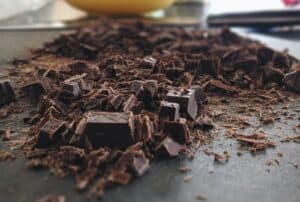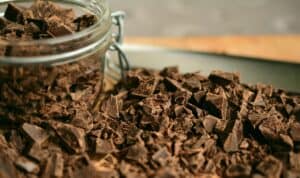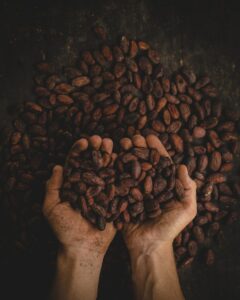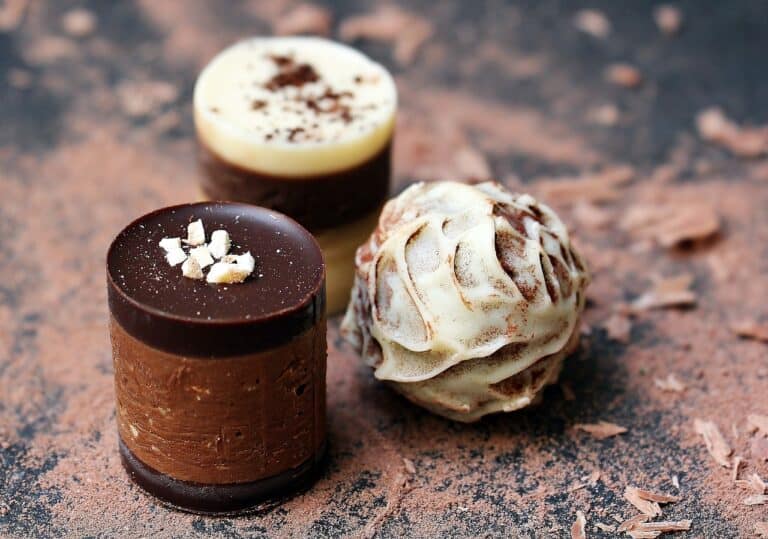When you savor a piece of creamy, delectable milk chocolate, you might not realize that you’re indulging in a marvel of food science. The journey of milk chocolate from cocoa beans to the smooth, satisfying bars we love is a fascinating one. In this in-depth exploration of milk chocolate science, we’ll delve into the intricate process of emulsifying milk chocolate, the significance of milk solids in chocolate, and uncover the secrets behind the science of milk chocolate.
The Basics of Milk Chocolate

The Core Ingredients
To understand the science of milk chocolate, let’s start with the basics. Milk chocolate is a blend of cocoa solids, cocoa butter, sugar, and milk solids. These ingredients come together to create the harmonious flavor and creamy texture we associate with this delightful treat. The milk solids are the unsung heroes that contribute significantly to the taste and texture of milk chocolate.
Cocoa solids and cocoa butter, the main components of all chocolate, provide the chocolatey goodness. However, it’s the addition of milk solids that sets milk chocolate apart from its dark counterpart. These solids, derived from milk, bring a richness and creaminess that make milk chocolate truly special.
The Role of Milk Solids in Chocolate
Milk solids, often in the form of milk powder, play a pivotal role in the world of milk chocolate. They contain various components, including proteins, lactose, and minerals. These components interact with the cocoa particles in a complex dance of chemical reactions that influence the final taste and texture of milk chocolate.
The sugar crystals in milk chocolate also interact with the milk solids, contributing to the unique taste profile. Understanding the science behind this interaction is crucial for achieving the perfect balance between sweetness and creaminess in milk chocolate.
Emulsification in Milk Chocolate

What is Emulsification?
The process of emulsifying milk chocolate is key to achieving that smooth, velvety texture. Emulsification is a technique used in the culinary world to combine two ingredients that don’t naturally mix, in this case, water-based milk and fat-based cocoa butter. The emulsification process ensures that the milk solids and cocoa butter are evenly dispersed throughout the chocolate.
Emulsifiers in Action
Emulsifiers, such as lecithin, are commonly added during the chocolate-making process. They act as the middlemen, facilitating the union of water and fat. In this case, emulsifiers prevent the milk solids from separating and forming clumps in the chocolate mixture. This results in a homogeneous, silky consistency in milk chocolate.
The Science Behind Flavor
Unveiling the Flavor Components
The delightful taste of milk chocolate is the result of the interplay between various chemical compounds. Among these, amino acids and sugar are crucial contributors to the flavor. Amino acids, the building blocks of proteins, bring depth to the chocolate’s taste, while sugar provides the desired sweetness.
Additionally, volatile compounds present in both the cocoa solids and milk solids influence the aroma and overall flavor profile of milk chocolate. These compounds are responsible for the subtle notes and nuances that make each milk chocolate brand and type unique.
The Art of Making Milk Chocolate

From Cocoa Beans to Chocolate Bars
Creating milk chocolate is an intricate process that involves several steps. It all begins with cocoa beans, which are roasted, cracked, and winnowed to extract the nibs. These nibs are then ground into a paste known as cocoa liquor, which forms the foundation of the chocolate.
Milk powder, in various forms such as powdered milk or milk powders, is added at this stage. The milk solids in this form blend seamlessly with the cocoa particles, enhancing the creamy texture. The mixture is further refined, conched, tempered, and molded into the familiar chocolate bars we adore.
Dark and Milk Chocolate Compared
What Sets Them Apart
While both dark and milk chocolate share some common elements, such as cocoa solids and cocoa butter, there is a significant difference in the presence of milk solids. Dark chocolate contains little to no milk solids, allowing the pure, robust flavor of cocoa to shine. On the other hand, milk chocolate features a higher concentration of milk solids, creating a smoother and sweeter taste.
The Science of Chocolate Flavor
Maillard Reaction and More
The Maillard reaction, a chemical reaction between amino acids and reducing sugars, contributes to the unique flavor of milk chocolate. This reaction occurs during the roasting of cocoa beans and the subsequent processing of chocolate. It’s responsible for the development of those rich, caramel-like notes that characterize milk chocolate.
Health Aspects and Nutritional Value

Is Milk Chocolate a Health Food?
It’s no secret that chocolate consumption is a beloved guilty pleasure. However, when it comes to the nutritional value of milk chocolate, there are some considerations. While it may not be a health food, it does offer some potential health benefits in moderation.
The milk solids in milk chocolate contribute to the overall fat content. Palmitic acid, a type of saturated fat, is naturally present in cocoa butter, but it’s also present in milk fat. However, it’s important to note that the melting point of the fats in milk chocolate is slightly lower than that of cocoa butter, giving it a characteristic melt-in-your-mouth quality.
The Role of Fat Bloom
Understanding Fat Bloom
If you’ve ever opened a chocolate bar to find a powdery, white layer on the surface, you’ve encountered fat bloom. This phenomenon occurs when chocolate is exposed to temperature fluctuations. Fat crystals in the chocolate, especially cocoa butter, can migrate to the surface and recrystallize, resulting in the whitish appearance.
The Science of Chocolate Production
The Journey Continues
Chocolate production is a complex and delicate process that requires a deep understanding of the rheological properties of chocolate. Rheology is the study of how materials flow, and it’s crucial in chocolate production to achieve the desired texture and consistency.
The particle size of cocoa and sugar particles also plays a role in the final product’s texture and mouthfeel. Careful control of these factors is essential in creating a chocolate that meets the high standards of chocolate lovers around the world.
The Legacy of Milk Chocolate
A Taste of History
The world of milk chocolate wouldn’t be the same without the pioneering work of individuals like Daniel Peter, who first successfully mixed milk and chocolate in the mid-19th century. This revolutionary development paved the way for the creation of milk chocolate as we know it today.
The Science of Taste
Sensory Perception
When you enjoy a piece of milk chocolate, it’s not just about the taste. The texture, aroma, and even the sound of biting into a piece all contribute to the sensory experience. The royal society of chocolate lovers continues to explore the intricacies of how our brains perceive these sensory cues, adding yet another layer to the science of chocolate.
Final Thoughts: The Science of Milk Chocolate
Milk chocolate is a testament to the wonders of food science. The delicate balance of milk solids in chocolate, the art of emulsifying milk chocolate, and the chemistry behind the flavor all come together to create a beloved treat. As you savor your next piece of milk chocolate, remember
- The Therapeutic Benefits Of Chocolate Making Workshops
- The Significance Of Cocoa Rituals
- The Science Of Milk Chocolate
- The Psychology Behind Gifting Chocolate
- The History Of Chocolate
- The Benefits Of Single Origin Chocolate
- The Art Of Chocolate Packaging Design
- The Allure Of Vintage Chocolate Advertisements
